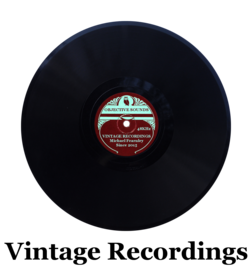
"'La donna è mobile' (The woman is fickle) is the Duke of Mantua's canzone from the beginning of act 3 of Giuseppe Verdi's opera Rigoletto (1851). The canzone is famous as a showcase for tenors. Raffaele Mirate's performance of the bravura aria at the opera's 1851 premiere was hailed as the highlight of the evening. Before the opera's first public performance (in Venice), the song was rehearsed under tight secrecy: a necessary precaution, as "La donna è mobile" proved to be incredibly catchy, and soon after the song's first public performance, every gondolier in Venice was singing it.
As the opera progresses, the reprise of the tune in the following scenes exemplifies a sense of confusion, as Rigoletto realizes that from the sound of the Duke's lively voice coming from within the tavern (offstage), the body in the sack over which he had grimly triumphed, was not that of the Duke after all: Rigoletto had paid Sparafucile, an assassin, to kill the Duke, but Sparafucile had deceived Rigoletto by indiscriminately killing Gilda, Rigoletto's beloved daughter, instead. The song is an irony, as no character in the opera presents traits associated with rationality; every character may be considered callous and mobile ('inconstant')."
| Composer | Giuseppe Verdi |
|---|---|
| Work | La Donna è Mobile (from Rigoletto) |
| Tenor | Beniamino Gigli |
| Orchestra | La Scala Orchestra, Milan |
| Conductor | Franco Gione |
| Date Recorded | 26th March 1934 |
| Recording Location | Milan |
| Date Restored | 23rd February 2016 |
| Serial Number | HMV DA1372 |
| Recording Cutter | Western Electric type 1B |
| Bandwidth | 50Hz to 6kHz |
| Transfer Stylus | 2.8 mil truncated elliptical |
| Transfer Cartridge | Stanton 500 at 5g |
| Transfer Turntable | Hitachi HT-350 at 78RPM |
| Cutter Compensation | 250Hz first order lift down to 40Hz |
| Click Reduction | DeClick, wavelet mode, 45, 2 passes |
| Crackle Reduction | DeCrackle, wavelet mode, 42, 2 passes |
| Low Frequency NR | DeNoise LF, mono, 150Hz, -55dB |
| Wideband NR | DeNoiseExp, constant auto noise floor -55dB |
| Limiting Filter | 48dB/octave Butterworth, at bandwidth limits |
| Additional Eq. | Western Electric microphone compensation |
This disc was kindly donated to me by Lewis Gregory.
Surprisingly this recording demonstrates that the primitive Western Electric cutter was still in use in 1934, having seemingly been phased out a couple of years beforehand, as indicated by the triangle in the matrix code. This was probably due a Western 1B being the only available cutter available in Milan when this recording was made. I processed this transfer using an improved experimental version of Brian Davies' DeNoise software that allows the user to set a residual noise floor, that stays constant as the noise floor on the recording itself changes, due to the decreasing linear velocity of the groove towards the end of each side on 78s. Very conservative thresholds for click detection were required in order to avoid damaging the vocal part.
Recorded in Milan, this well known piece is probably Gigli's most famous and popular recording, with many copies of this disc being available on various internet auction sites.
As this is a very popular recording elsewhere on the web, being over 80 years old, I have made it available for download in an open source format on this site.
I have decided to use Q7 Vorbis for site downloads, instead of MP3 or even FLAC, as it is just as well supported as of 2016, and provides transparency at about a third of the file size. There isn't really much point for using FLAC as the final listening format (all processing is done losslessly, of course) as the quality of the recordings themselves is already rather limited given their age. The general consensus on HydrogenAudio is that Q5 is enough for transparency with modern recordings, so the downloads offered are encoded at a more than ample Q7. Vorbis is by far a superior codec to MP3, as transparency is obtained at almost half the file size.
The audio tracks listed on this page are digital restorations of 78 RPM records in my possession, whose mechanical copyright has expired before the time of this page's publication. No later release is used so any copyright affecting such a release does not apply to any of the sound recordings shown on this page. Claims to the contrary may be vexatious if pursued. Any communication between parties claiming copyright of the material on this website and the author of this site will be published immediately with great derision. The contents of this page must not be copied represented or sold without express permission.
Michael Fearnley 2016